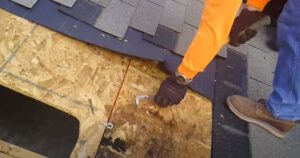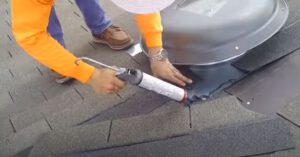The Comprehensive Process for Repairing a Damaged Australian Roof
 A sturdy and well-maintained roof is essential for protecting a home or building from the elements. In Australia, where harsh weather conditions like intense heat, heavy rain, and strong winds are common, roofs are susceptible to damage over time. Whether it’s due to age, wear and tear, or severe weather events, repairing a damaged Australian roof requires a systematic and thorough approach. This article aims to provide a comprehensive overview of the process involved in repairing a damaged roof in Australia, covering the initial assessment, planning, material selection, repairs, and final inspections.
A sturdy and well-maintained roof is essential for protecting a home or building from the elements. In Australia, where harsh weather conditions like intense heat, heavy rain, and strong winds are common, roofs are susceptible to damage over time. Whether it’s due to age, wear and tear, or severe weather events, repairing a damaged Australian roof requires a systematic and thorough approach. This article aims to provide a comprehensive overview of the process involved in repairing a damaged roof in Australia, covering the initial assessment, planning, material selection, repairs, and final inspections.
Initial Assessment
Repairing a damaged roof begins with a detailed initial assessment to identify the extent and nature of the damage. This assessment should be conducted by a qualified roofing professional. The initial assessment involves:
- Visual Inspection: The roofing expert will visually inspect the roof, looking for signs of damage such as missing or broken tiles, cracked shingles, leaks, or sagging areas. They will also check for potential underlying issues like rot or pest infestation.
- Internal Inspection: In some cases, it may be necessary to inspect the attic or ceiling space below the roof to assess any water damage or structural issues that may not be visible from the exterior.
- Documentation: The roofing professional will document the findings, including photographs and notes, to accurately determine the scope of repairs required.
Planning and Cost Estimation
Once the initial assessment is complete, the next step is to develop a detailed plan for the repair process. This includes:
- Identifying Repair Options: Based on the assessment, the roofing professional will determine the most suitable repair options. This may range from minor patching and replacement of individual components to more extensive repairs, such as re-roofing or structural reinforcement.
- Material Selection: The choice of materials is crucial in ensuring the longevity and effectiveness of the roof repair. Factors such as the climate, local building codes, and the existing roof structure will influence the selection of materials, including roofing tiles, shingles, sealants, adhesives, underlayment, and fasteners.
- Cost Estimation: The roofing professional will provide a comprehensive cost estimate for the repair project, including the materials, labor, and any additional services required. This estimate allows homeowners to plan their budget accordingly and make informed decisions.
Obtaining Permits and Approvals
Depending on the extent of the repairs and local regulations, it may be necessary to obtain permits and approvals before commencing the work. This step ensures compliance with building codes and regulations set by local authorities. The roofing professional will assist in obtaining the required permits and ensuring that the repair work adheres to the specified guidelines.
Repair Process
 The actual repair process involves several key steps, which may vary based on the specific requirements of the damaged roof. Here is a general outline of the repair process:
The actual repair process involves several key steps, which may vary based on the specific requirements of the damaged roof. Here is a general outline of the repair process:
- Safety Precautions: Before commencing any repair work, it is crucial to implement safety measures, such as wearing appropriate personal protective equipment (PPE), securing the work area, and ensuring proper ladder safety.
- Removal of Damaged Components: The damaged roofing materials, such as tiles or shingles, will be carefully removed to expose the underlying structure. This step may require the use of tools such as pry bars, hammers, or roofing-specific equipment.
- Structural Repairs: If the initial assessment reveals any underlying structural damage, such as weakened rafters or trusses, it is essential to address these issues before proceeding with the roof repairs. Structural repairs may involve reinforcing or replacing damaged components.
- Replacing Roofing Materials: Once the underlying structure is secure, the damaged roofing materials will be replaced with new ones. Care should be taken to match the existing roof’s style, color, and material to ensure a seamless appearance.
- Leak and Waterproofing Solutions: In cases where leaks or water damage were identified, the repair process should include adequate waterproofing measures. This may involve applying waterproof membranes, sealants, or installing additional flashing to prevent future water intrusion.
- Finishing and Cleanup: After the repairs are complete, the roofing professional will ensure that all areas are clean and free of debris. The final touches may include trimming excess materials, applying protective coatings, or conducting necessary paint touch-ups.
Final Inspections and Maintenance
To ensure the quality and durability of the repair work, a final inspection should be conducted. This inspection can be carried out by the roofing professional or a designated building inspector. The inspection ensures that the repairs meet the required standards and regulations.
Additionally, regular roof maintenance is vital for extending its lifespan and preventing future damage. Homeowners should consider scheduling periodic inspections and maintenance tasks, such as gutter cleaning, debris removal, and checking for any signs of deterioration.
Conclusion
Repairing a damaged roof in Australia requires a systematic approach that includes an initial assessment, planning, material selection, the repair process itself, and final inspections. By following this comprehensive process, homeowners can ensure their roof is restored to optimal condition, providing protection and longevity for years to come. Regular maintenance and prompt repairs when necessary are essential to avoid more significant issues down the line. Remember, it is always advisable to consult with a professional roofing contractor for accurate assessments and reliable repairs.